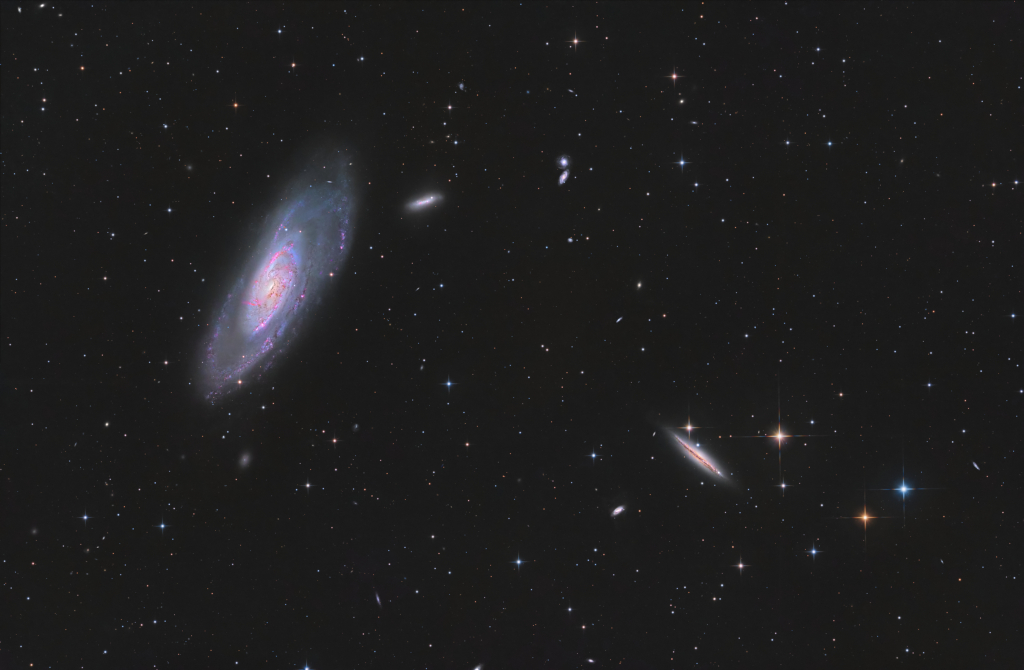展望 M 106
A View Toward M106

來源:Kyunghoon Lim|發表日期:2024-02-22
又大又亮又美麗的螺旋狀天體,Messier 106 佔據了這個宇宙景觀。近兩度寬的望遠鏡視場望向訓練有素的金犬座,靠近北斗七星的把柄。M 106 也被稱為 NGC 4258 ,直徑約為 8 萬光年,距離我們 2350 萬光年,是犬牙二星系群中最大的成員。對於一個遙遠的星系來說,M 106 的距離是眾所周知的,部分原因是它可以透過追蹤這個星系非凡的 maser(即微波鐳射發射)來直接測量。這種maser 發射非常罕見,但卻是自然產生的,它是由環繞其活動星系核的分子云中的水分子產生的。在 M 106 的右下方,幾乎從邊緣看去,另一個突出的螺旋星系是 NGC 4217 。NGC 4217 的距離並不那麼為人所知,估計約為 6000 萬光年,但明亮的尖狀恆星位於前景,遠在我們銀河系的內部。
原文:Big, bright, beautiful spiral, Messier 106 dominates this cosmic vista. The nearly two degree wide telescopic field of view looks toward the well-trained constellation Canes Venatici, near the handle of the Big Dipper. Also known as NGC 4258, M106 is about 80,000 light-years across and 23.5 million light-years away, the largest member of the Canes II galaxy group. For a far far away galaxy, the distance to M106 is well-known in part because it can be directly measured by tracking this galaxy's remarkable maser, or microwave laser emission. Very rare but naturally occurring, the maser emission is produced by water molecules in molecular clouds orbiting its active galactic nucleus. Another prominent spiral galaxy on the scene, viewed nearly edge-on, is NGC 4217 below and right of M106. The distance to NGC 4217 is much less well-known, estimated to be about 60 million light-years, but the bright spiky stars are in the foreground, well inside our own Milky Way galaxy.
※ 本文由萌芽機器人自動轉貼自每日一天文圖(Astronomy Picture of the Day,APOD),原文為英文,正體中文是透過 DeepL 翻譯及 OpenCC 進行自動處理,內容僅供參考,若有任何錯誤之處還請見諒!
關於每日一天文圖:每日一天文圖網站是美國國家航空暨太空總署與密西根理工大學提供的服務,網站每天提供一張影像或圖片,並由天文學家撰寫扼要說明其特別之處。